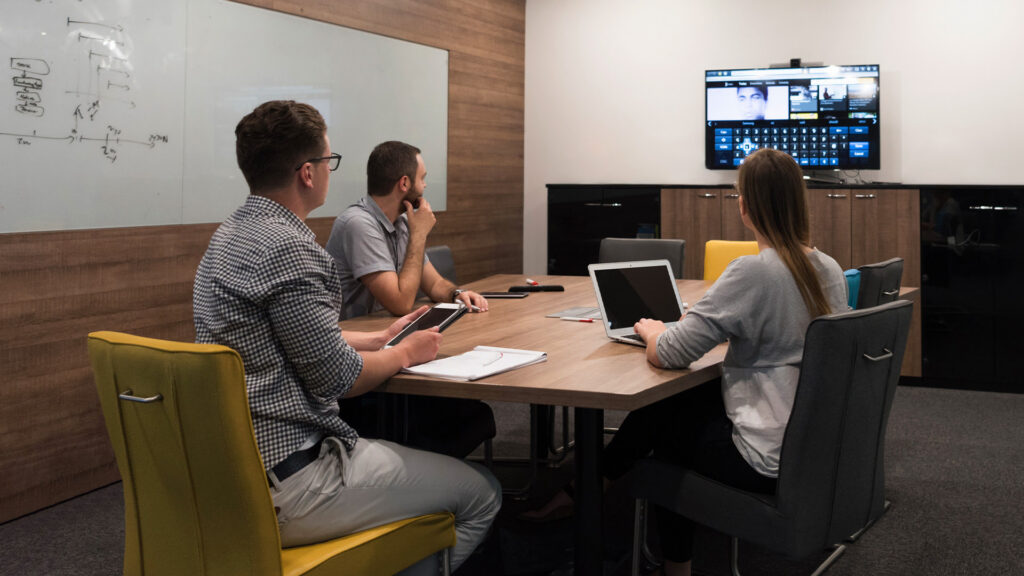The following contains excerpts from an in-depth interview with WORKTECH Academy. Click here to read the full article.
Far too often, technology integration when it comes to the hybrid workplace is currently missing the mark. A novel approach by Canada’s ET Group uses design thinking to develop more human-centred solutions.
In the final article of our series on “Making Hybrid Happen” with WORKTECH Academy, we’ve summarized the seven key design thinking principles that we abide by in our approach to human-centred technology design.
Why this approach? By putting the human experience first, and technology second, we can gain a better understanding of your desired experience and unveil the real obstacles, unique use-cases and people challenges that we are solving for.
“Everyone agrees that effective tech integration can unlock new ways of working, but there is far less consensus on the best way to go about the process.”
Here are just a few of the ways that we do it:
1. Adopt a participatory mindset
We look to our clients as our co-creators, and use a range of methods to look at things through the lens of [your] users – from one-to-one confidential conversations and immersive role-playing to asking your people to tell stories about their experiences.
2. Show empathy
Showing empathy, — or, walking a mile in the user’s shoes — allows us to really understand struggles you’re facing and get you and your people more engaged in the process. When you feel truly seen and heard, you open the door to more honest conversation.
3. Prototype early and often
Allowing you to test solutions as we discover them and get a feel for what the resulting experience could be gives us important intel on what’s working, and what isn’t so we can continue to iterate until we find the right fit.
4. Create a shared platform
There needs to be alignment between everyone contributing to the process of what the desired experience is, what methods are being used and what success looks like. When we all agree on a shared objective, we are much more eager to take the journey to get there, together.
Discover the rest of the seven principles here, and read the rest of the “Making Hybrid Happen” series at WORKTECH Academy.
Stay connected with us:
Follow ET Group on LinkedIn
Follow us on Twitter
Subscribe to ET Group’s YouTube Channel







